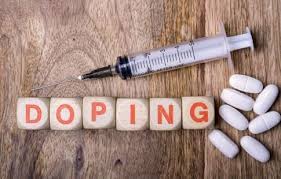The term “doping” means the use of biologically active substances or drugs with the aim of increasing the physical abilities and abilities of the athlete.
Doping in Italian law
Doping is prescribed by Italian law and is considered a practice subject to special control measures, rules and regulations, so much so that it is considered a criminal offense punishable by several years’ imprisonment as established by the Penal Code.
Only in the presence of pathological conditions of an athlete, documented and confirmed by a doctor, special treatment with substances prohibited for doping is allowed, and the possibility of equal participation in sports competitions. Even so, the treatment must be tailored to the specific therapeutic needs, and the athlete must maintain and have available documentation at all times.

In accordance with the Law of December 14, 2000 , n, 376, “The discipline of health protection in sports and the fight against doping” is published in the Official Gazette no. 294 dated December 18, 2000, in fact:
The administration or intake of drugs or biologically or pharmacologically active substances, as well as the acceptance or submission of medical practice that is not justified by pathological conditions and is suitable to alter the psychophysical or biological conditions of the body to change the athletes’ athletic performance.
Anti-doping control at competitions and sporting events belongs to some laboratories accredited by the International Olympic Committee (IOC).
The concept of doping
The concept of doping has evolved over time and continues to evolve, in fact the rules that govern this practice have changed over the years, and the substances that are subjected to these rules have changed over time.
Actually Not all medications are prohibited by an athlete anti-doping rules, but only those that govern the improvement of physical ability. In practice, the definition of a dopant is a legal definition: it is a regulation that sets out which substances are considered doping.
The ability of these drugs to influence athletic performance is sometimes only speculated and unrealistic for in some cases there is no research to support this hypothesis. However, the real or perceived that this property of the drug, when included in the list of prohibited compounds, cannot be used by the athlete.
Evaluating which substances to ban is the responsibility of the International Olympic Committee, which periodically updates the list of doping compounds based on assessments made taking into account not only actual potential efficacy, but also potential risks of abuse : IOC does not admit that the substance is used without a therapeutic justification.
Spread of doping among amateurs and amateurs
Whereas in the past these practices were limited only to professional athletes, today doping affects large sections of the sports population . Doping is a complex phenomenon, the spread of which contributes to social factors and deeper individual motivations. In addition, the increasingly easy access to the substances in question, which is now also facilitated by possible online purchases, has greatly expanded this practice. In fact, many drugs can now be bought online as they come from countries where the rules on this matter are less restrictive, which is why globalization has also affected the spread of drugs and wonder substances.
For many people, sporting success or simply being in great physical shape represents their affirmation in the society in which they live, so they try to achieve this in any way they can.

While there are anti-doping rules and tests for professional athletes that determine or not a violation, in the case of amateurs or amateurs there is no form of control, so in their case the spread of doping substances is extremely facilitated. Consequently, it is now easier to use doping substances for the amateur than for the professional who lives by his sporting success. Obviously, the risk for these self-made athletes is even higher , as their behavior is often not monitored even under the supervision of a doctor and therefore only controlled by a simple athlete who usually has knowledge to put it mildly, limited by the real risks with which he collides.
Currently, it is difficult to make an accurate assessment to understand how widespread the phenomenon of doping is. Based on test statistics, it can be said that the samples found positive represent approximately 2% of the total number of tests performed. However, it is possible that many athletes will bypass the tests as some substances are not easily traceable, so it is possible that this percentage could be much higher. In addition, the actual distribution in amateur and amateur sports is not known, since the lack of control does not allow obtaining specific data. There is no doubt that, as mentioned above, this phenomenon is becoming more common.
